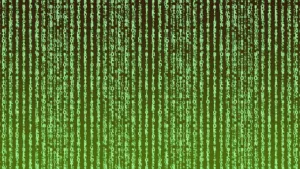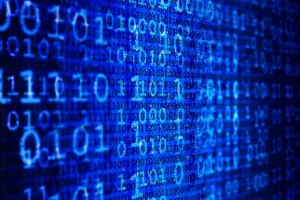Quantum Computing – In the vast and fascinating realm of physics, a revolutionary field has emerged, promising to unlock the secrets of the subatomic world and propel computing capabilities to unprecedented heights. This field is known as quantum computing, and it has the potential to solve problems that are virtually impossible for classical computers to tackle.
The Principle of Superposition
At the heart of quantum computing lies a fundamental principle of quantum mechanics – the ability of subatomic particles to exist in multiple states simultaneously. This phenomenon, known as superposition, is a mind-bending concept that defies our intuitive understanding of the world around us.

Imagine a tiny particle, like an electron, that can spin in two directions at the same time – clockwise and counterclockwise. In the classical world, this would be impossible, as an object can only spin in one direction at a given moment. However, in the quantum realm, this paradoxical behavior is not only possible but also a fundamental property of nature.
Qubits: The Building Blocks of Quantum Computation
Quantum computers harness this superposition principle by using specialized particles, called qubits (short for quantum bits), as their basic units of information. Unlike classical bits, which can only exist in a state of 0 or 1, qubits can exist in a superposition of 0 and 1 simultaneously. This remarkable ability allows quantum computers to perform calculations in parallel, exponentially increasing their computational power.
Revolutionizing Cryptography and Materials Science
But how does this translate into real-world applications? One of the most promising applications of quantum computing is in the field of cryptography. Current encryption methods, which rely on the factorization of large numbers, are virtually unbreakable for classical computers. However, quantum computers, with their ability to perform calculations in parallel, could potentially crack these encryption codes in a matter of seconds, rendering our current security systems obsolete.

Another area where quantum computing could revolutionize our understanding is in the field of materials science. By simulating the behavior of atoms and molecules at the quantum level, researchers could design new materials with unprecedented properties, such as super-strength, ultra-lightweight, or even room-temperature superconductivity.
Unlocking the Secrets of Life
Moreover, quantum computing could unlock the secrets of complex biological systems, such as the intricate mechanisms of protein folding, which have remained elusive to classical computing methods. By simulating these processes at the quantum level, researchers could gain valuable insights into the fundamental building blocks of life, paving the way for groundbreaking medical treatments and drug discoveries.
Overcoming Challenges
However, despite the immense potential of quantum computing, there are still significant challenges to overcome. One of the biggest hurdles is the fragility of qubits. These delicate particles are highly susceptible to external disturbances, such as temperature fluctuations or electromagnetic interference, which can cause them to lose their quantum state, a phenomenon known as decoherence.

To combat this issue, researchers have explored various techniques, such as quantum error correction and fault-tolerant quantum computing, which aim to protect qubits from external influences and maintain their quantum state for longer periods.
Another challenge lies in the complexity of quantum algorithms. While quantum computers can perform certain calculations much faster than classical computers, developing algorithms that can fully harness the power of quantum computing is a daunting task that requires a deep understanding of quantum mechanics and advanced mathematical concepts.
The Quantum Future
Despite these challenges, the field of quantum computing continues to make remarkable strides, fueled by the relentless efforts of researchers and the immense potential it holds for unlocking the mysteries of the subatomic world.
As we dive deeper into the quantum realm, we are not only expanding our scientific knowledge but also paving the way for transformative technologies that could reshape our understanding of the universe and potentially solve some of humanity’s most pressing challenges.
READ ALSO
The Journey to Mars – What it takes!
DNA – The Building Blocks of Life
Virtual Reality – Transcending the Boundaries of Reality
Renewable Energy – Paving the way to a sustainable future
Frequently asked questions
1. What is superposition and how is it related to quantum computing?
Superposition is a fundamental principle of quantum mechanics where subatomic particles can exist in multiple states simultaneously. In quantum computing, this principle is harnessed by using qubits (quantum bits) that can exist in a superposition of 0 and 1 at the same time, allowing quantum computers to perform calculations in parallel.
2. What are qubits, and how are they different from classical bits?
Qubits (short for quantum bits) are the basic units of information in quantum computing. Unlike classical bits that can only exist in a state of 0 or 1, qubits can exist in a superposition of 0 and 1 simultaneously. This remarkable ability allows quantum computers to perform parallel calculations, exponentially increasing their computational power.
3. What are some potential applications of quantum computing?
Some promising applications of quantum computing include cryptography (breaking encryption codes), materials science (designing new materials with unprecedented properties), and biology (simulating complex processes like protein folding). Quantum computing could also help solve complex problems that are virtually impossible for classical computers.

4. What are the main challenges faced in developing practical quantum computers?
One major challenge is the fragility of qubits, which are highly susceptible to external disturbances like temperature fluctuations or electromagnetic interference, causing them to lose their quantum state (decoherence). Another challenge is developing quantum algorithms that can fully harness the power, which requires a deep understanding of quantum mechanics and advanced mathematics.
5. How far away are we from practical quantum computing?
While significant progress has been made, practical large-scale quantum computers are still years away. Researchers are working to overcome challenges like qubit fragility, quantum error correction, and developing powerful quantum algorithms. However, the immense potential continues to drive research efforts in this field.
References:
1. “Quantum Computing for Computer Scientists” by Yasuhiro Takahashi and Noboru Kunihiro (Cambridge University Press, 2020)
2. “Quantum Computing: A Gentle Introduction” by Phillip Kaye, Raymond Laflamme, and Michele Mosca (MIT Press, 2007)
3. “Quantum Computing: Progress and Prospects” by Emily Grumbling and Mark Horowitz (National Academies Press, 2019)
4. “Quantum Computing: An Applied Approach” by Jack D. Hidary (Springer, 2019)
5. “Quantum Computing: A Short Course from Theory to Experiment” by Vincenzo Tamma (Springer, 2021)
6. Quantum Computing – Wikipedia https://en.wikipedia.org/wiki/Quantum_computing

